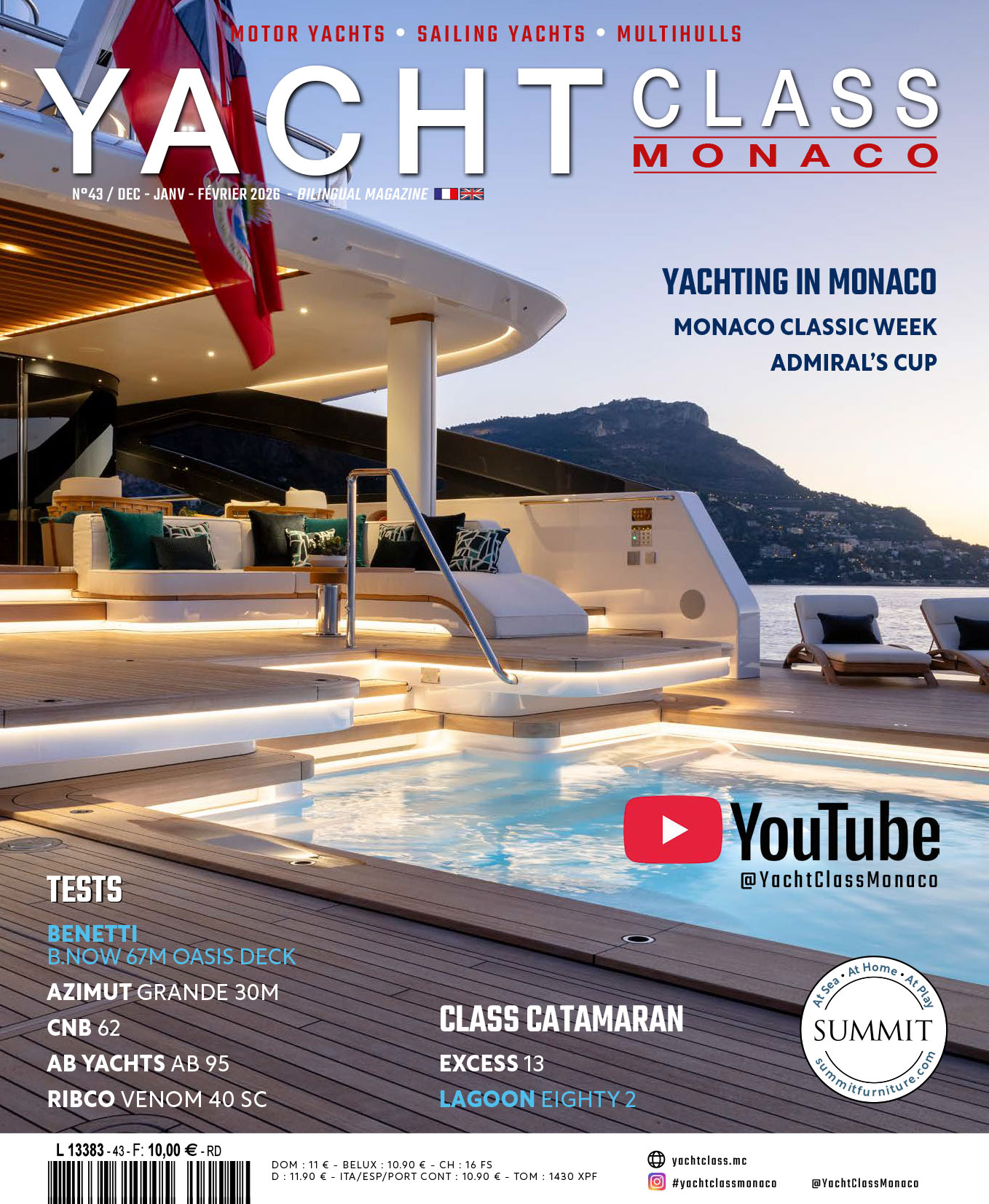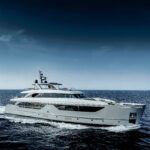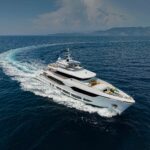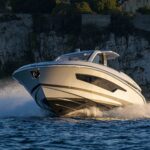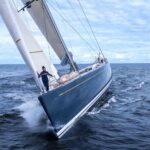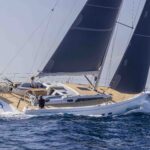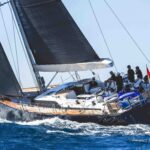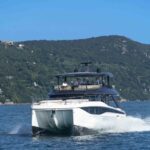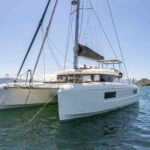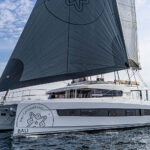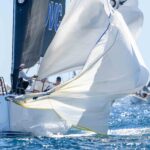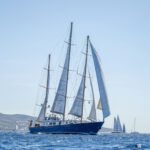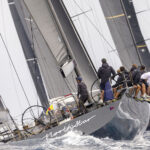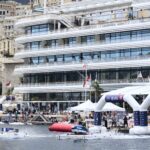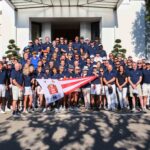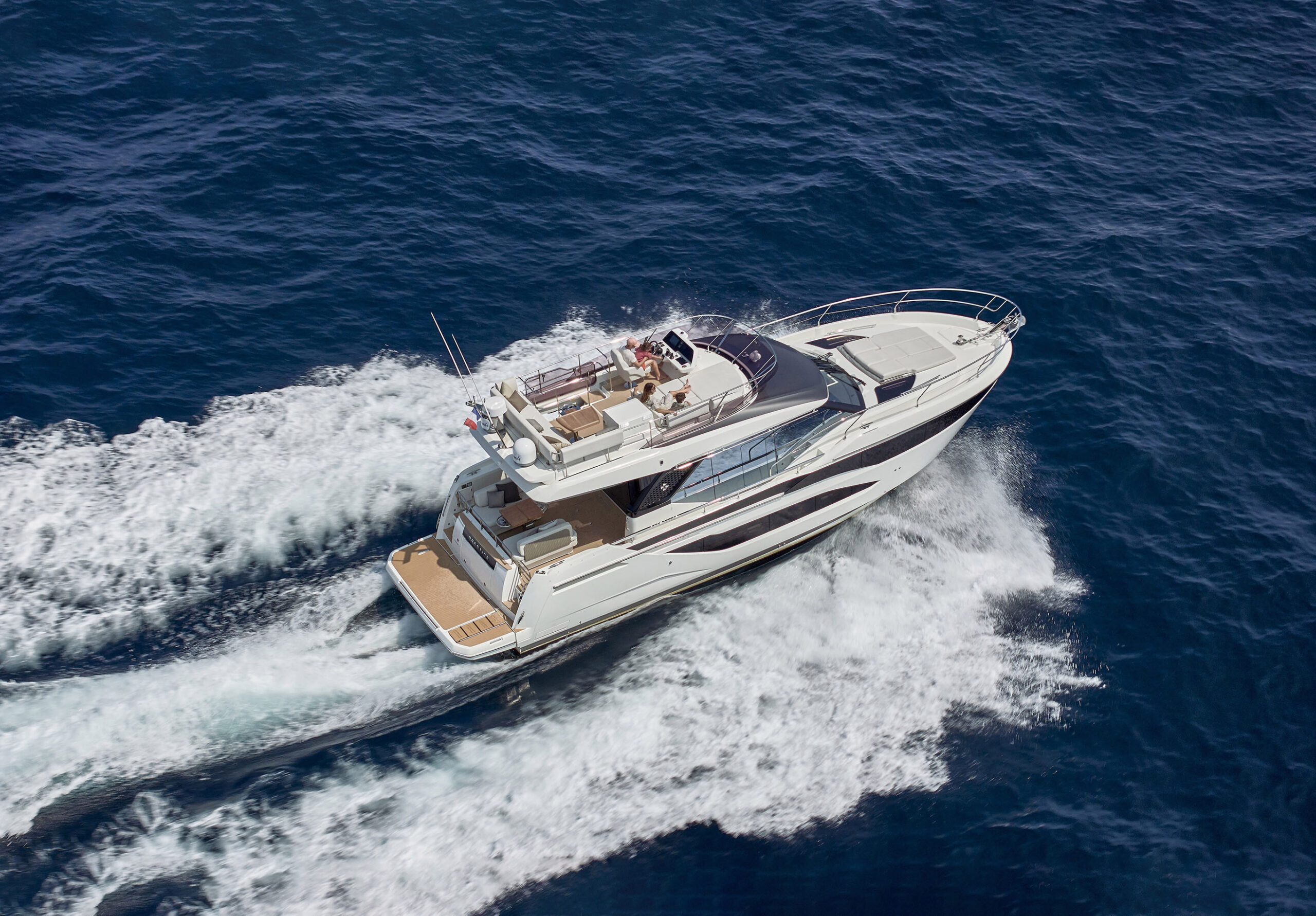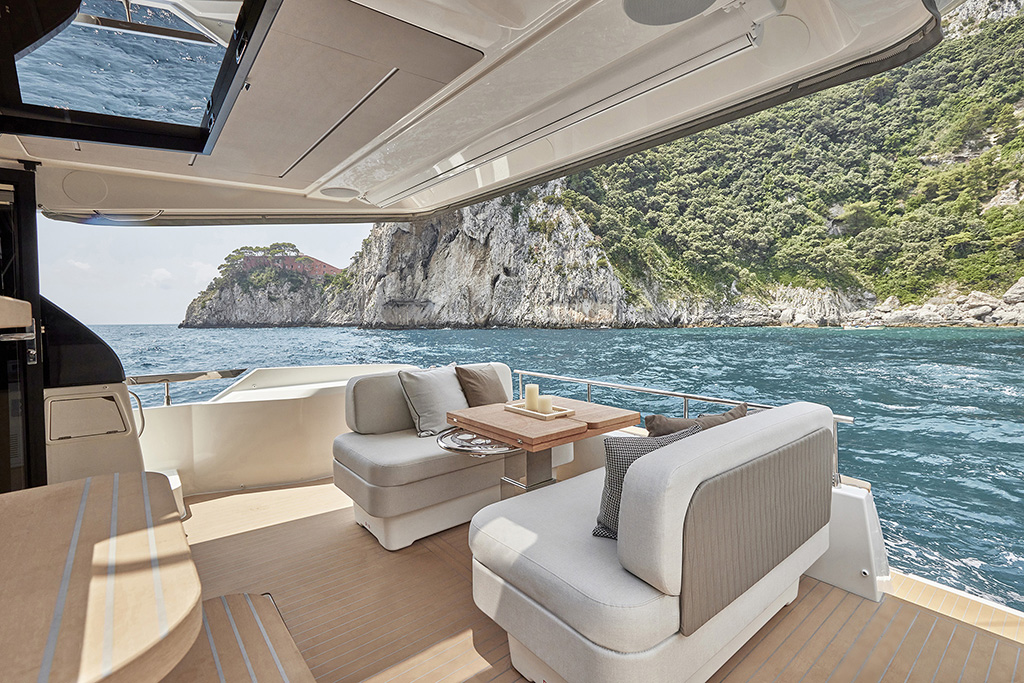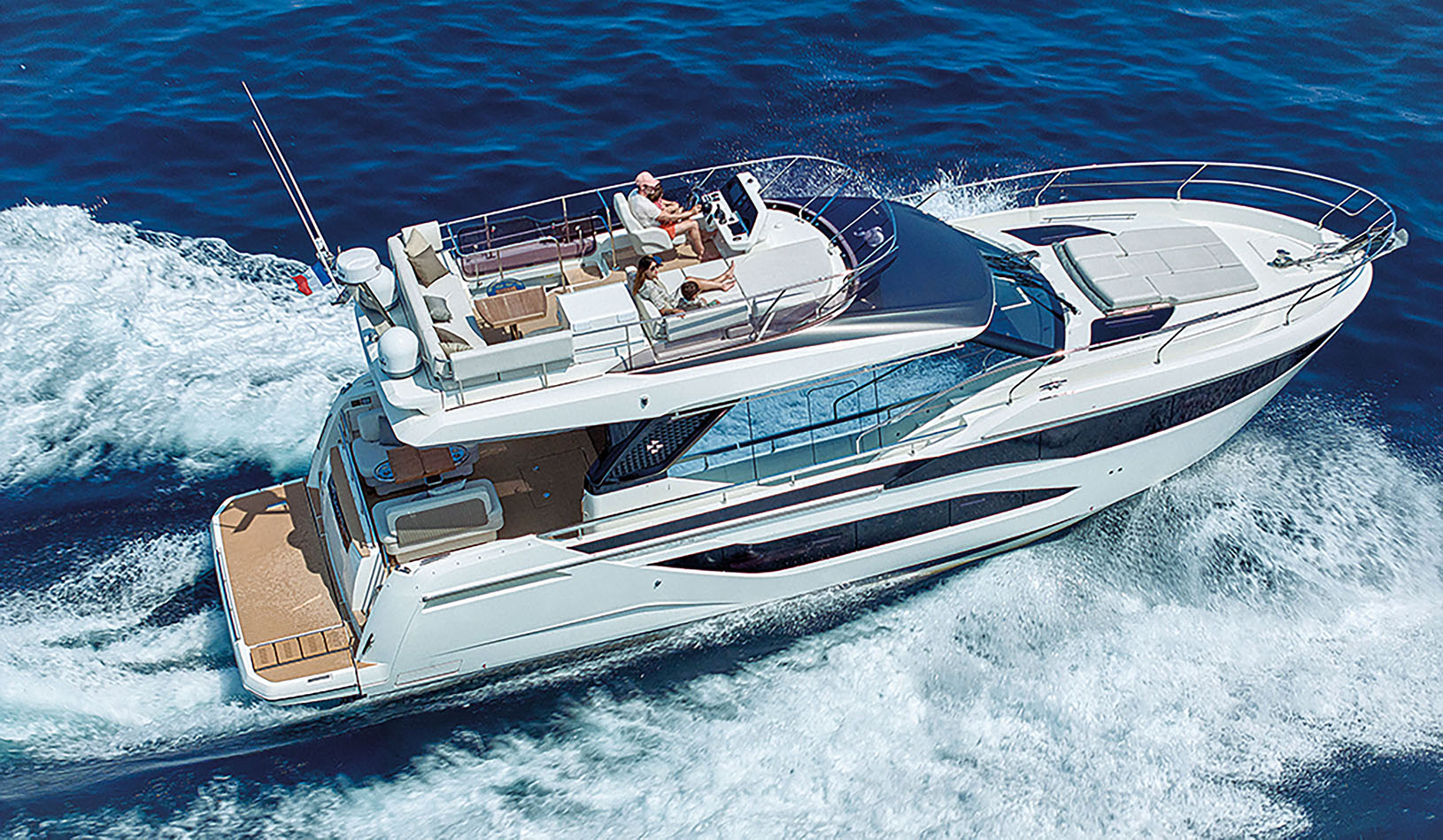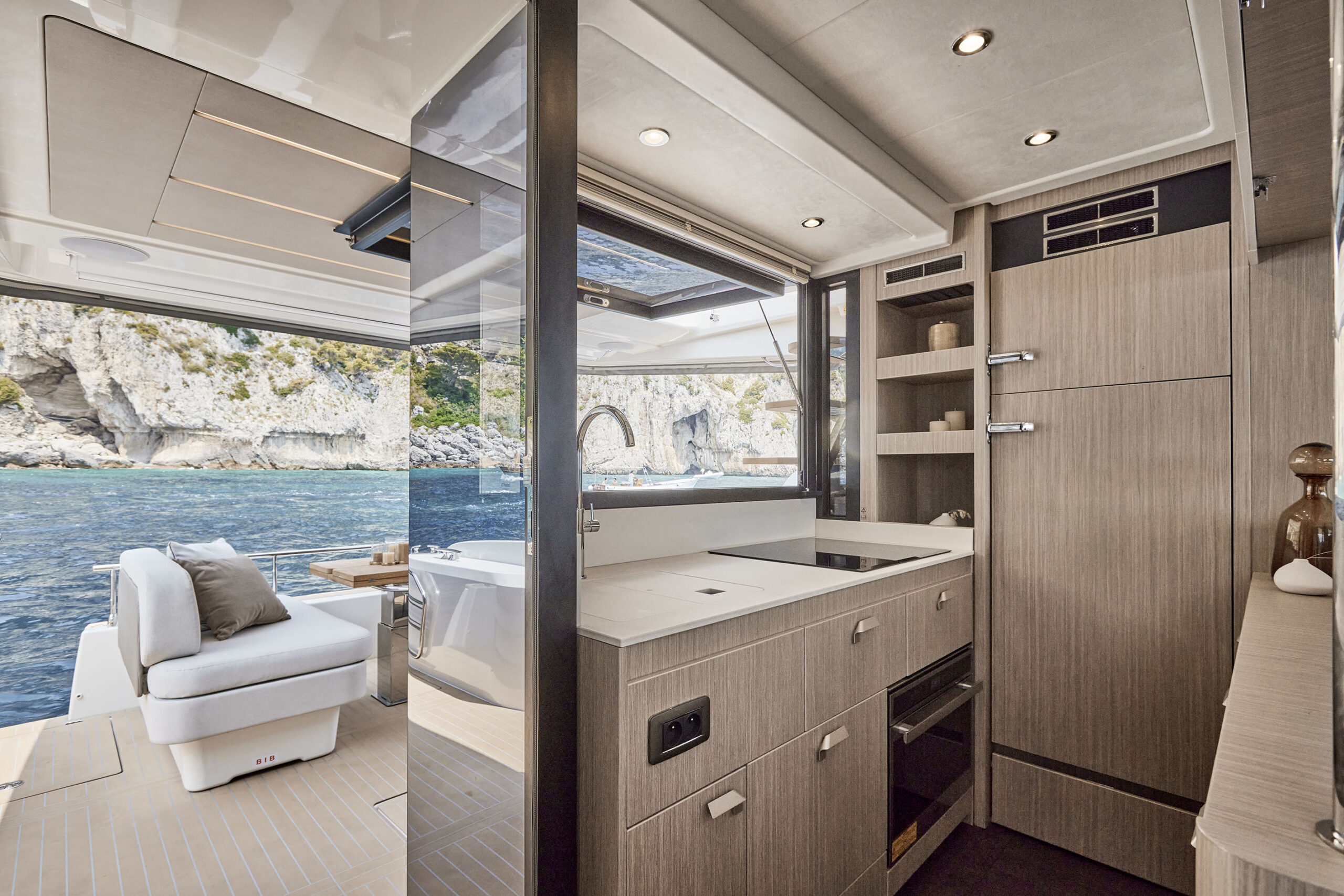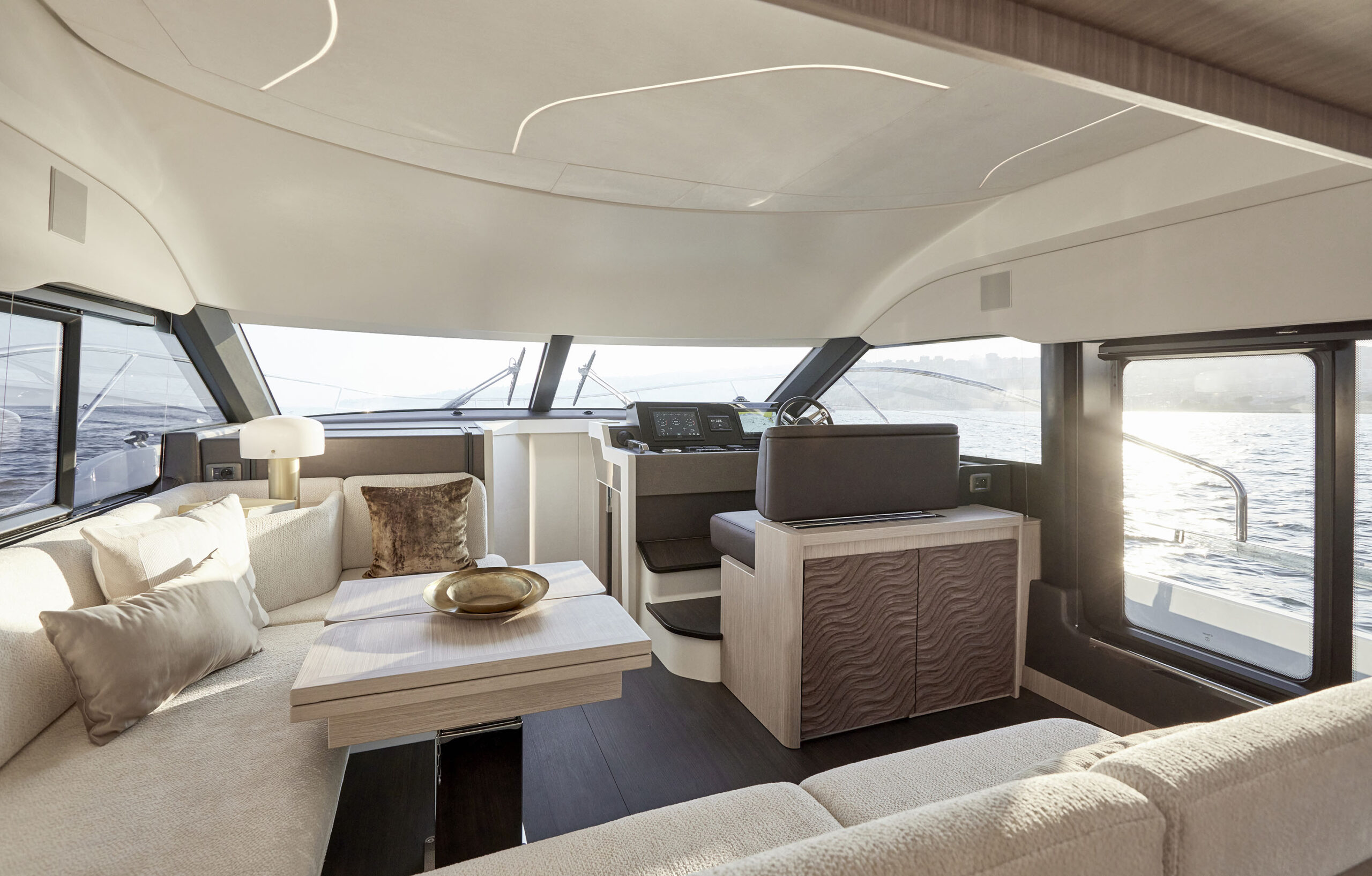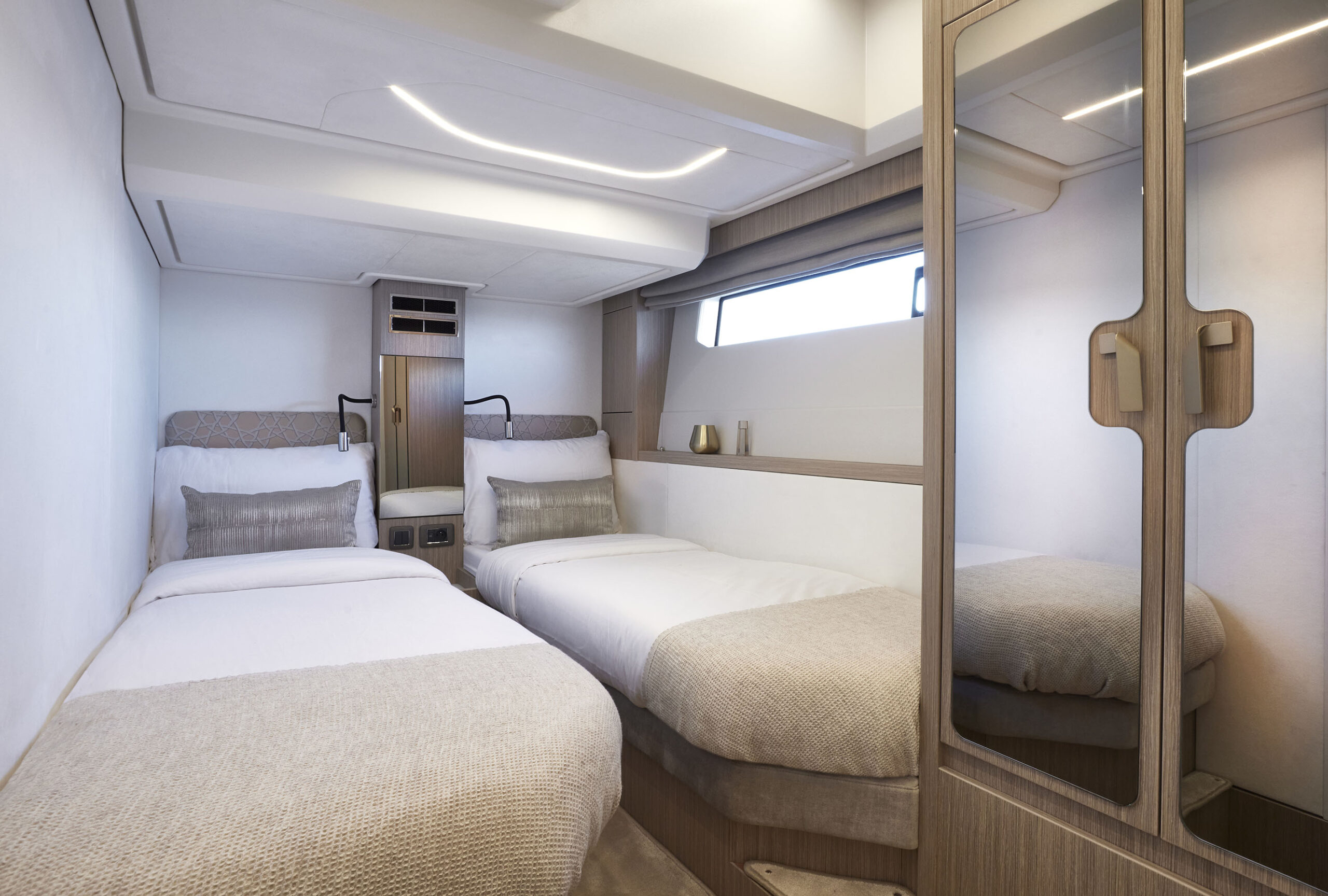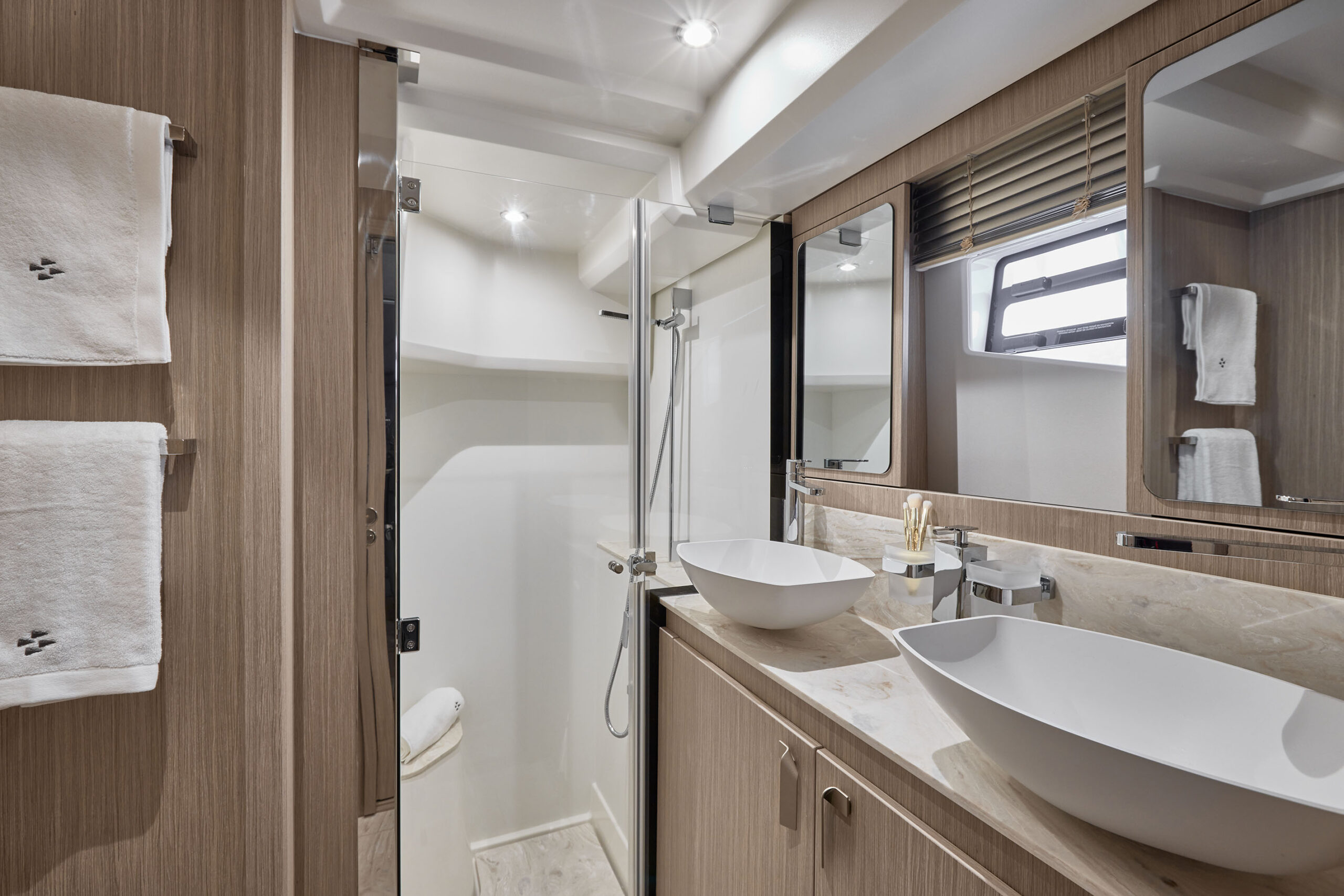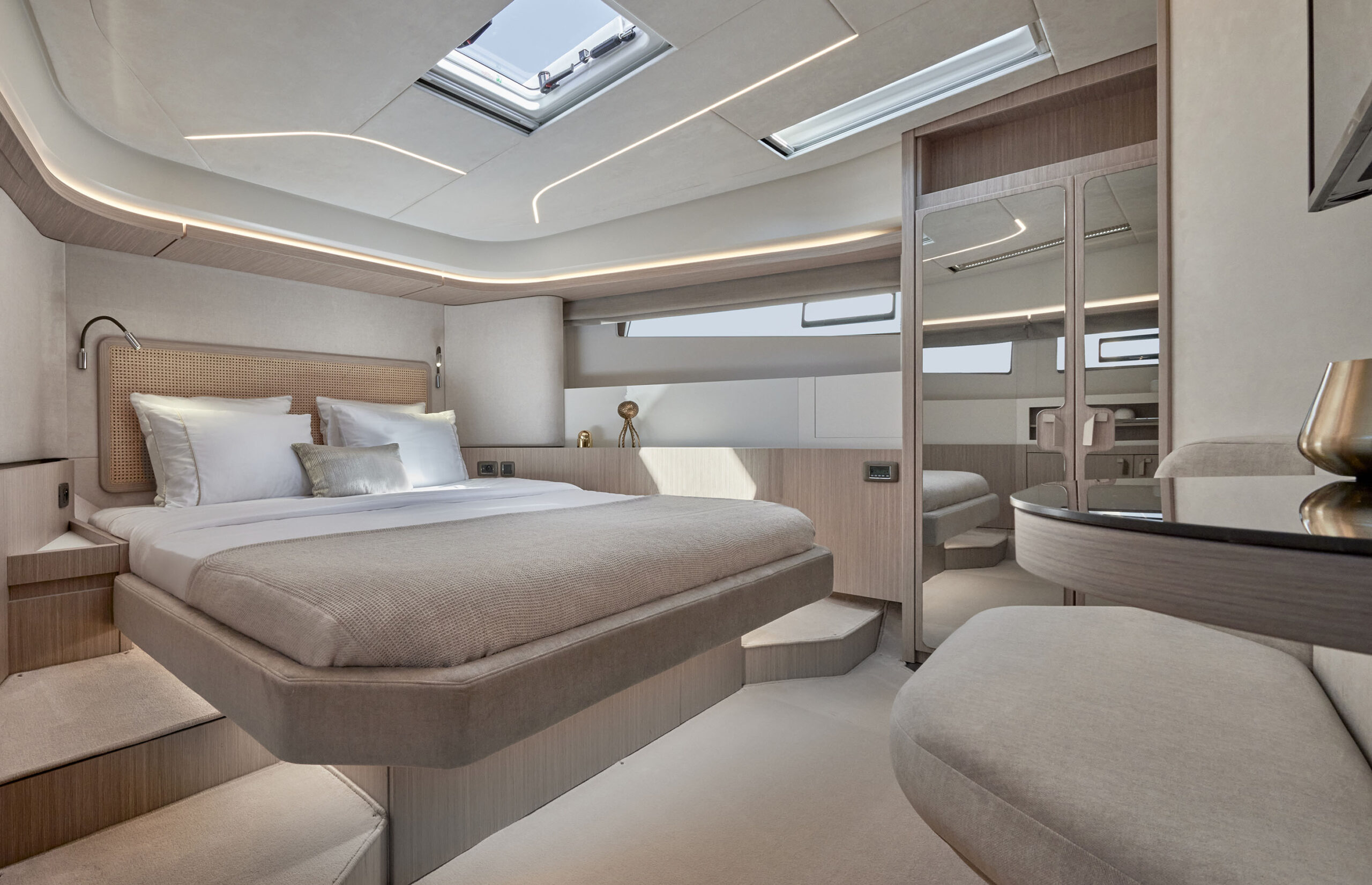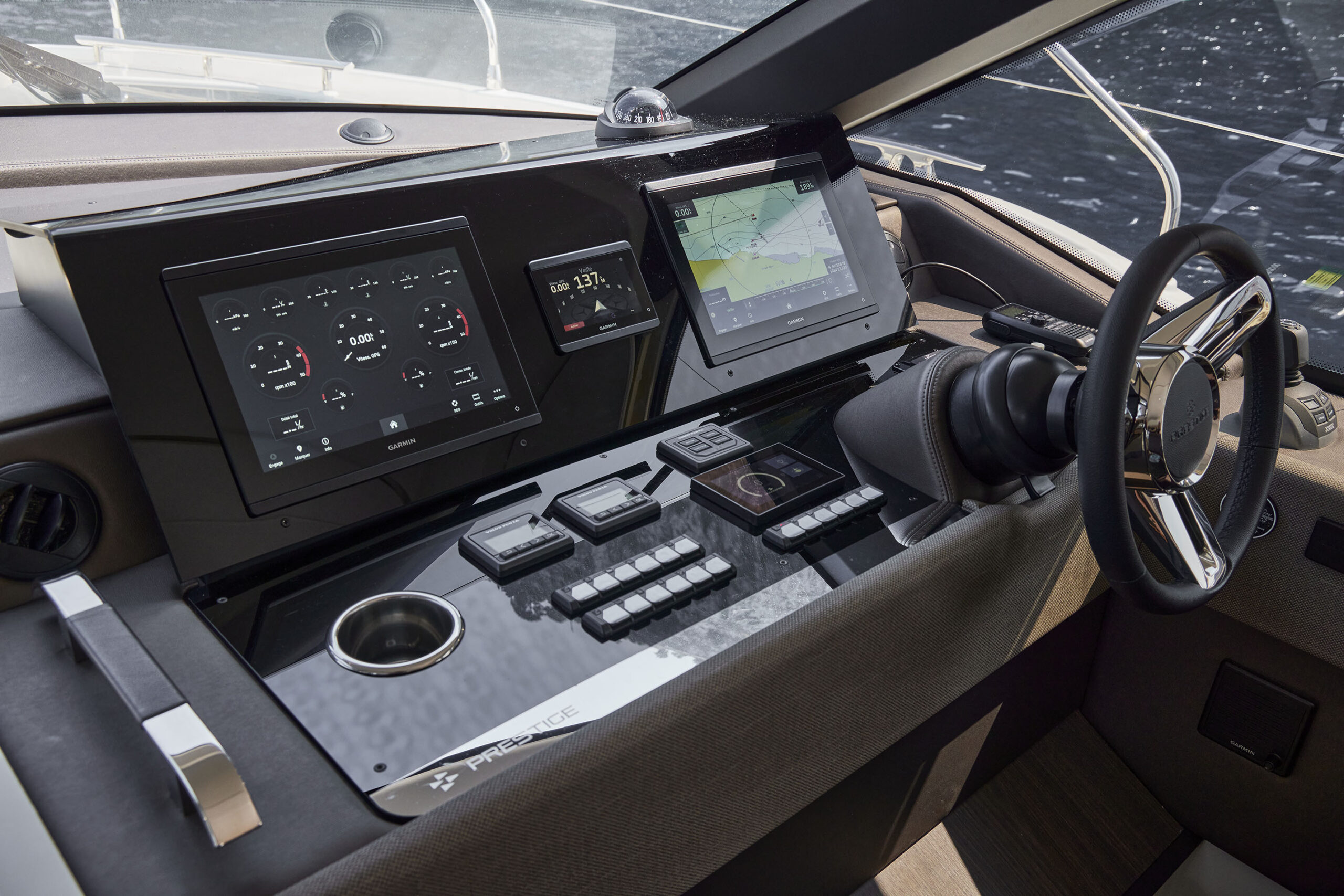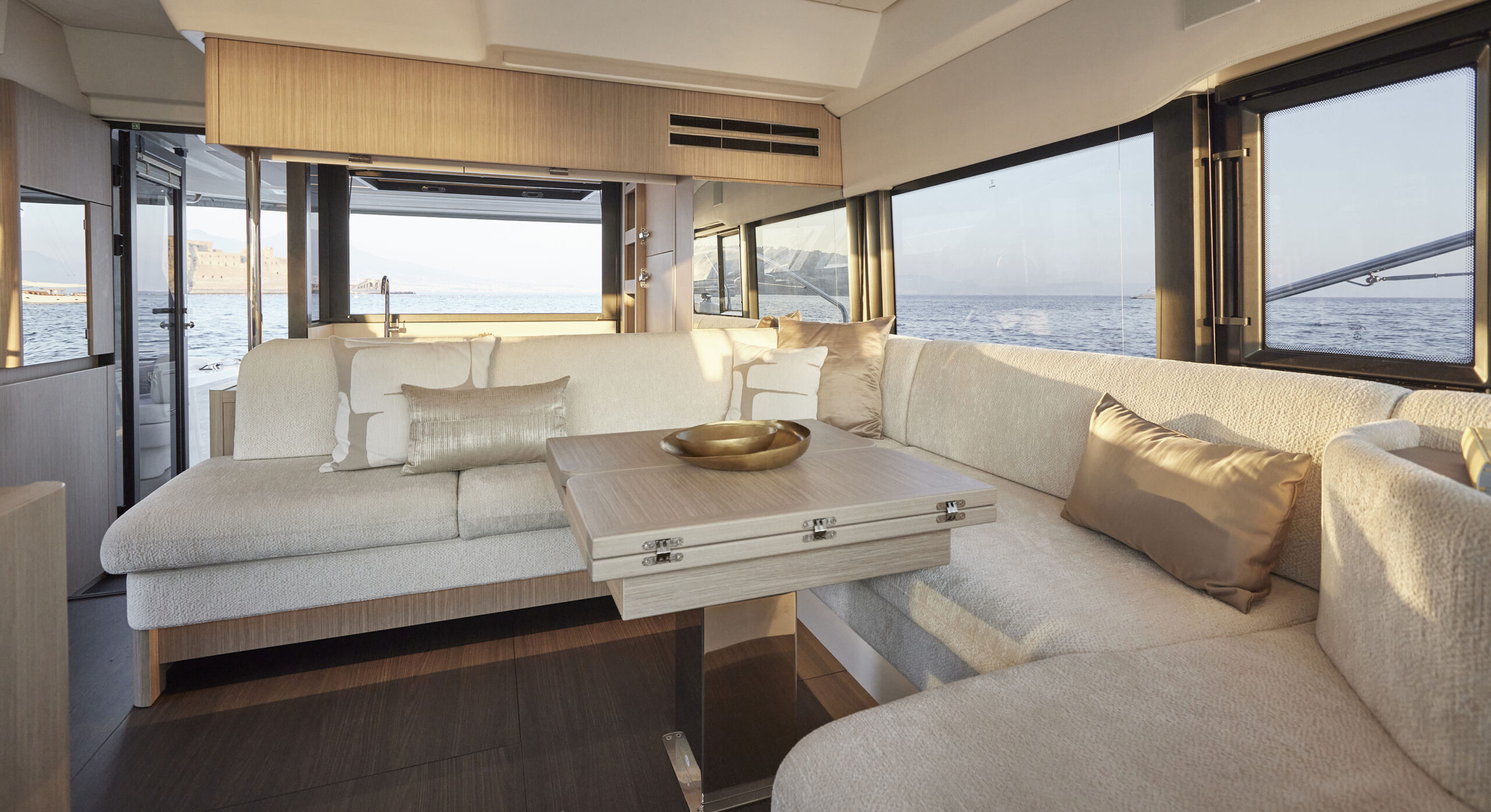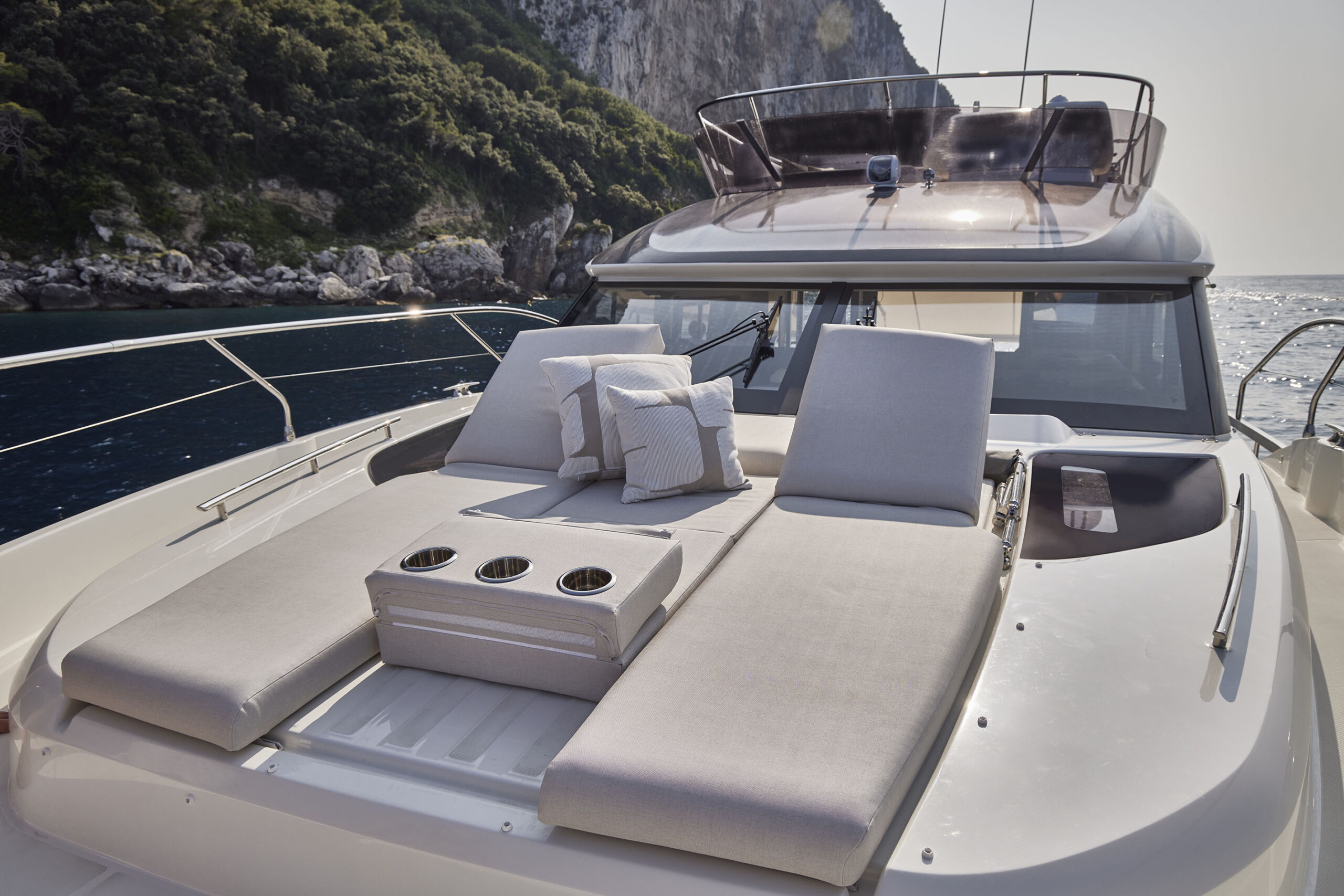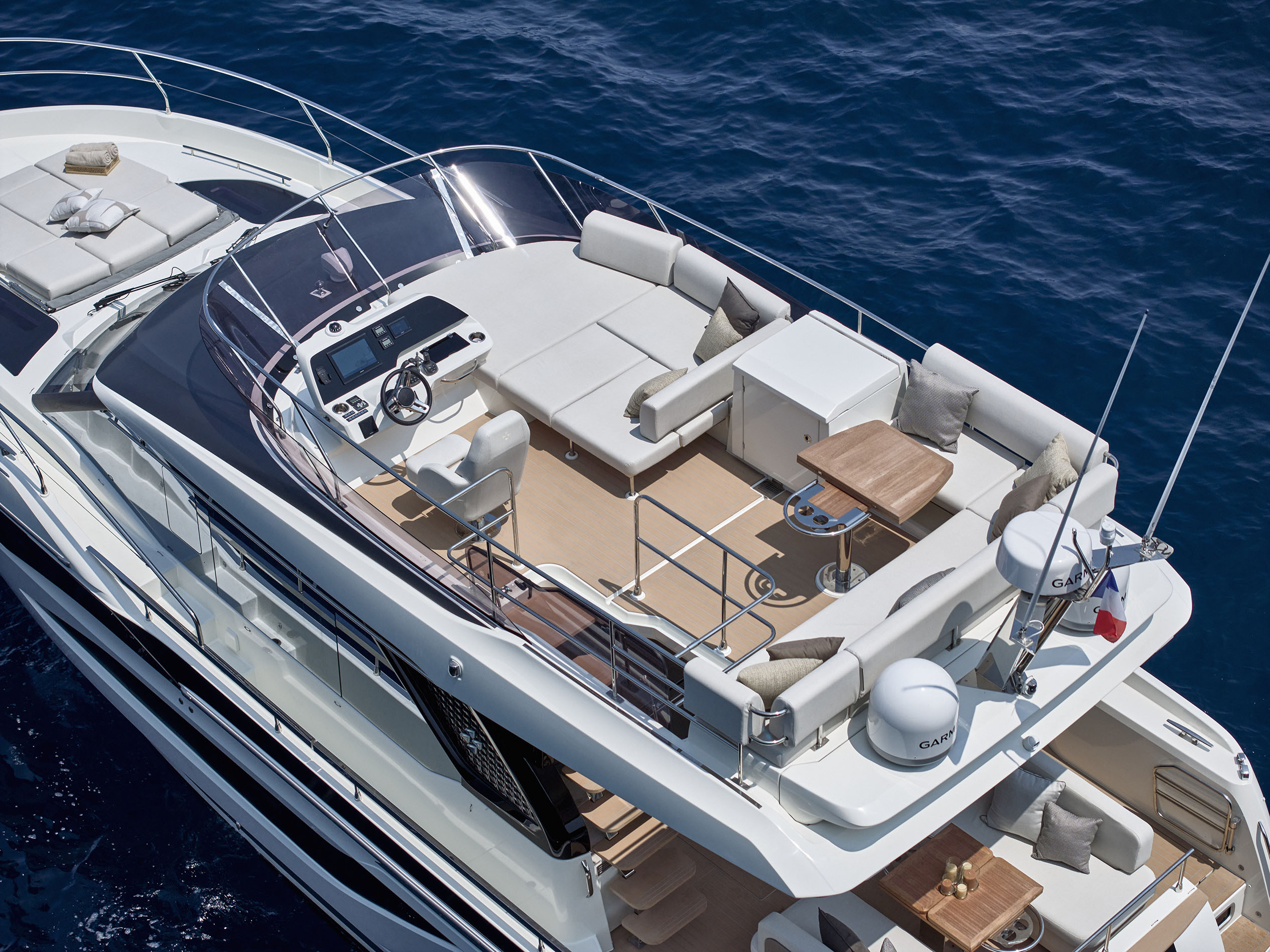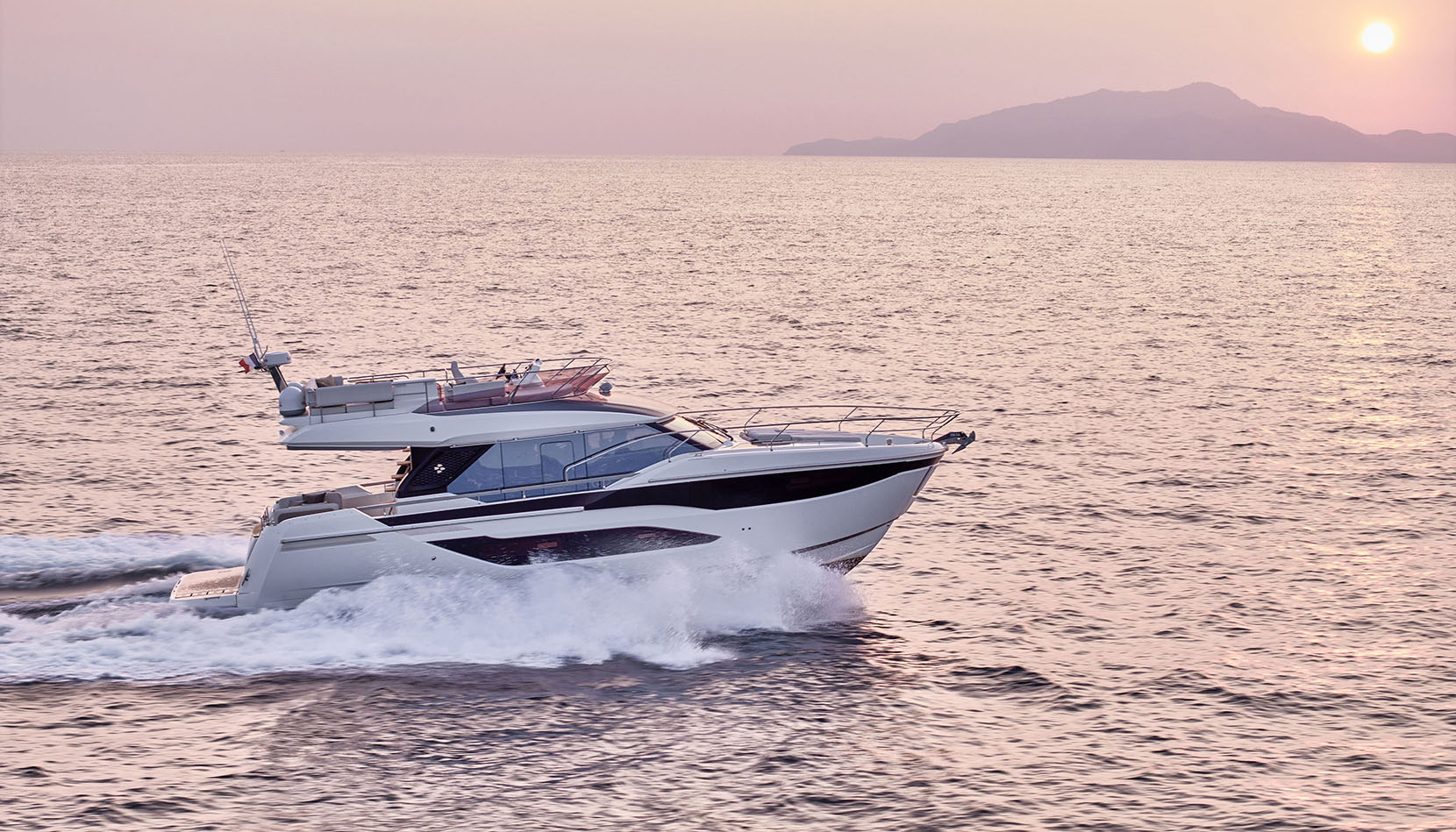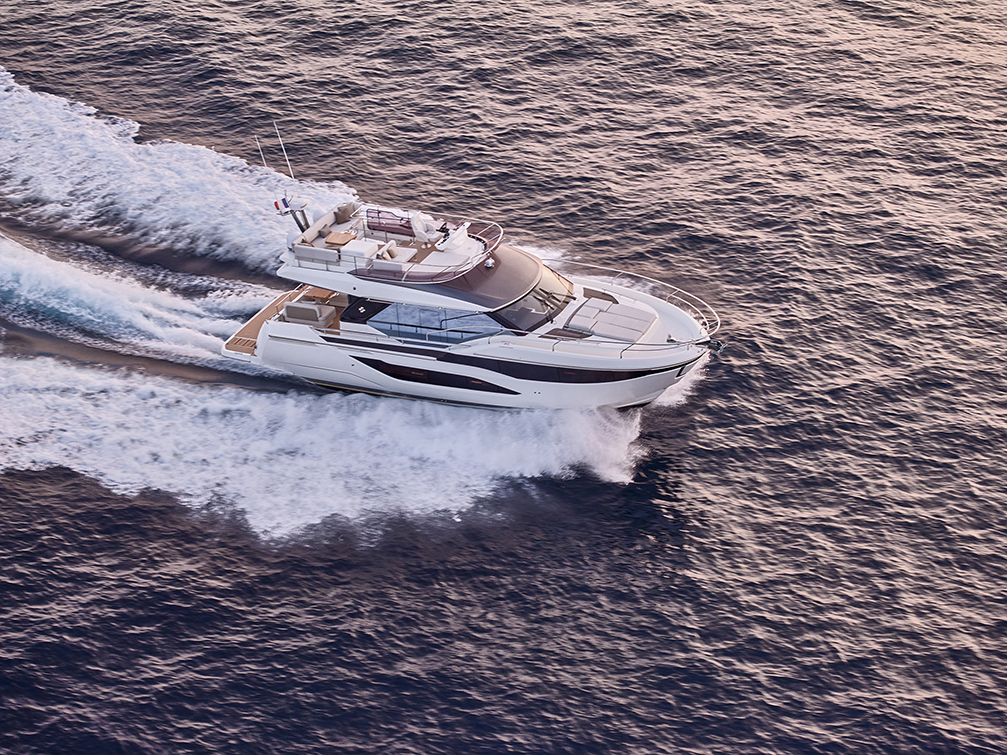Presentation
Yacht Class n°35 (dec 2023/jan-feb 2024)
Prestige Yacht – Groupe Beneteau
The Prestige shipyard has begun to renew its F-Line monohull range, composed mainly of flybridge models. There are currently five of them: 420, 460, 520, 590 and 690. Let’s move into the future with this 15-metre F4. We were privileged to board this attractive, user-friendly unit in Portopiccolo, Italy .
Written by : Alain Brousse – Photos : Jean-François Romero
For many decades now, Prestige has entrusted the design of its boats, both monohulls and catamarans, to the Italian design office of Vittorio Garroni, the founder, and his son Camillo. Never missing an opportunity to attend a launch event, the latter is a passionate advocate of each of his creations. Garroni Design, in close collaboration with Jeanneau’s technical department, has developed a very precise set of specifications for the first model of the new F-Line generation, the F4, dedicated to family cruising. The hull was designed by Michael Peters, an American architect with over forty years of experience in the motoryacht sector. For the F4, equipped with Volvo Penta IPS (2 x IPS650, i.e. 2 x 480 hp), this hull “master” worked in close contact with the Swedish engine manufacturer’s engineers. We were eager to take the helm of this new flybridge. Two options: the upper deck, with a 360-degree view, or the wheelhouse on the main deck, with a slightly more restricted visibility to the port stern. From the latter, vigilance is needed in steep turns, because of the heel. Otherwise, the hull is very smooth and comfortable on a slightly choppy sea. And it easily crosses wakes. Pleasant to handle, the F4 reached a top speed of 26.4 knots during our sea trial and she had a range of 185 miles at nearly 20 knots. Let’s not close the navigation chapter without talking about the sound insulation on this 15-metre. The Volvo Penta diesels were very quiet, especially when navigating.
Well-thought-out exteriors
The exterior design, by Garroni, is even more elegant than the existing F-Line models, yet the family DNA is respected. The sleek lines should easily stand the test of time. As for exterior layout, hats off to the stern and its swim platform, which can accommodate the tender (of up to 4 metres in length) in the absence of a traditional garage. Although the F4 doesn‘t have a beach club, the cockpit features a saloon (for 4 to 6) that can be converted into a solarium with a panoramic view entirely protected by the flybridge. On each side, a gangway leads to the foredeck and its deckhouse solarium. The pulpit is high enough to ensure safe circulation. Back in the cockpit, the stairs on the port side lead to the flybridge (16 m2). There is no lost space there: saloon, kitchenette (optional), solarium and helm station with an ergonomic armchair. As an option, the flybridge can be covered with either a bimini or a hard-top.
A bright, user-friendly saloon
How to prepare meals on the F4? There is a galley located at the entrance to the reception area, with a glass opening at mid-height (easy-to-use manual system), so the chef can communicate with guests in the cockpit saloon. There is plenty of storage space, and a large refrigerator with a freezer. On the starboard side of the galley, a glass door opens onto the bright saloon (seating up to 6) and the wheelhouse, which offers a generous view (over 200 degrees). Just behind the wheelhouse, a door gives easy access to the flybridge.
A lower deck for the sleeping accommodation
The F4 has three cabins. How could it be any other way on a 15 metre unit that is supposed to boast an interesting sleeping capacity. As a matter of fact, the lower deck of the F4 is entirely dedicated to the sleeping quarters. There are three cabins, including the forward master, spacious and tastefully designed. It has its own bathroom, while the other two cabins (one double and one twin) share the second head. And should the owner require a crew member, he or she will be assigned the rather small fourth cabin (a single berth), located just aft of the engine room and accessible via a hatch in the cockpit floor. Otherwise, this area will be used for storage. Inevitably, after a few hours at sea testing the new F-Line, our verdict is above average. And we can’t help thinking about future Fs, like the 5, 6 or 7. Without confirming it, Prestige general manager, Erwin Bamps, hinted at it.
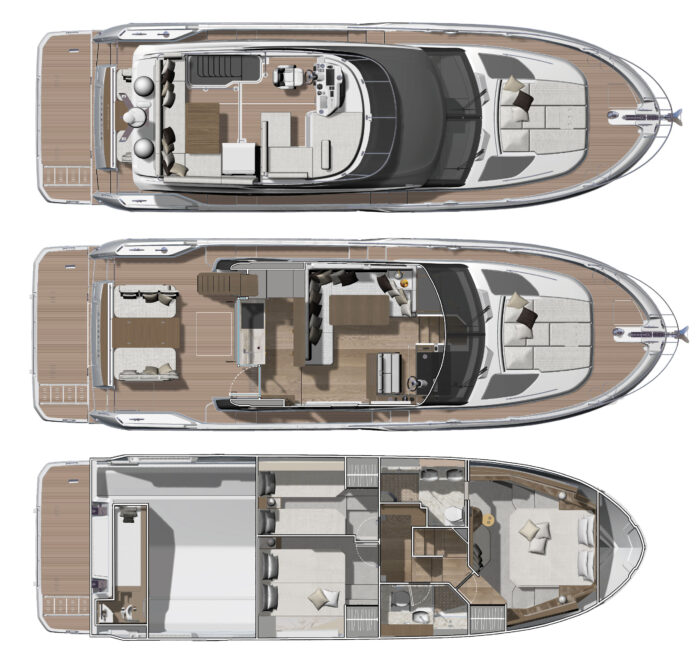
Technical sheet
